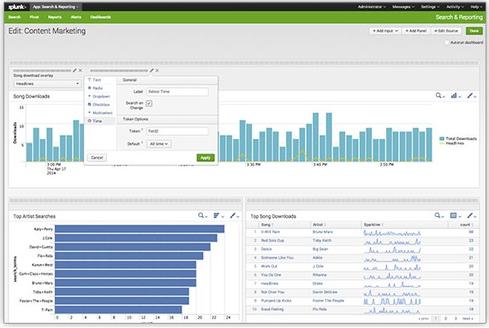Splunk Extends Analysis To NoSQL Databases

Splunk keeps rolling along, well ahead of an open-source threat that some thought might flatten it. The company last week sprinted ahead yet again, introducing advances to its Splunk Enterprise flagship product and Hunk platform for Hadoop, both of which are designed to “search, monitor, analyze, and visualize machine-generated big data.”
Splunk is a successful commercial vendor thriving in a big data market that is otherwise dominated by open-source products including Hadoop and various NoSQL databses. Splunk’s “search” capabilities include algorithms for clickstream analytics, machine-data analysis, IT operational analytics, risk analysis, and customer-service usage and patterns of behavior.
The majority of Splunk’s 7,000-plus customers use Splunk Enterprise, which gained several significant upgrades with last week’s 6.1 release. Expanding on high-availability clustering in 6.0, the product added support for multisite clustering, ensuring continuous availability across geographically distributed deployments. Splunk’s analysis algorithms also take advantage of multisite clustering though a feature called Search Affinity.
“If you’re in, say, Europe, Search Affinity has the smarts to only go to the local instance, even if the data of interest originated in North America, so it’s going to reduce latency, improve performance, and decrease network usage,” said Sanjay Mehta, Splunk product marketing VP, in a phone interview with InformationWeek.
Splunk is used mostly by IT types who can handle technical interfaces, but the 6.1 analytical interfaces have been simplified to help users. A new dashboard editor eliminates XML coding that used to be required to build advanced dashboards. Charting capabilities have also been improved, with pan-and-zoom controls and new chart types and overlays.
Splunk Enterprise 6.1 makes visualizations embeddable, so if you want to add updating charts or reports to Salesforce.com, NetSuite, or SharePoint sites, you can embed an object for broad business-user consumption.
Alerting capabilities have also been improved in 6.1, adding contextual insight into patterns of interest. Instead of just sending an alert that a website outage is imminent, for example, the product can also include insight into what’s causing the condition so users can take appropriate actions.
“We’ve always been able to send alerts, but now we can also relay details on activities that are hitting extreme levels or that have crossed a certain ratio so you can immediately react and ensure that systems stay up and running,” Mehta said. Read more























